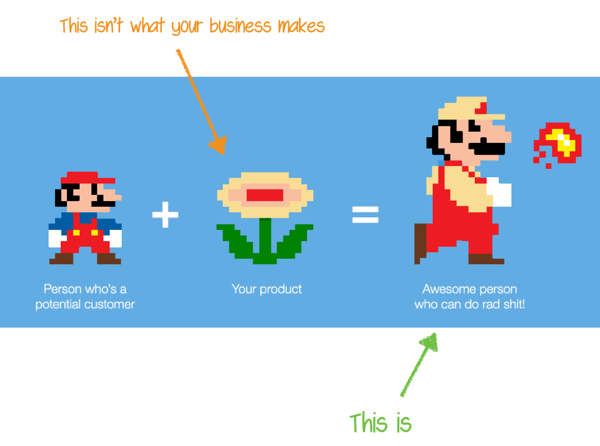People say the darndest things about user onboarding.
Why? Because everyone wraps their heads differently around user onboarding.
You see, onboarding is everyone’s job. Or at least it works best when people from multiple teams put their heads together. Everything from micro-copy to design to distribution can and does make a direct impact on the new user’s product experience, making it one of the most fascinating things to work on at a SaaS company.
If you’re wondering who owns user onboarding belongs to, the answer is “all of the above” UX. Product. Growth. Marketing. Customer Success.
Consequently, here are some of the brilliant, interesting (and some quirky) ways people are explaining user onboarding to each other:
1. IKEA Chairs

“You can also think of onboarding as the setup manual for your digital application or website, but with a subtle — yet effective — dose of persuasion. Kind of like the manual IKEA gives you to build a chair, but combined with an ulterior motive: Getting you to use the chair.”
2. Initial success

“So, since it’s hard to nail it down and there’s no universal definition for it, I prefer to consider a customer “onboarded” once they’ve achieved “initial success” with your product (consider this First Value Delivered – FVD).
What “initial success” does my customer need to achieve when all parties understand that the breadth and depth of use will continue to evolve and expand over their lifetime as a customer? That’s a great question to keep top of mind as you go through this process.”
(via Sixteen Ventures/Lincoln Murphy)
3. Nintendo

“Let’s begin where your users begin: the situation they don’t want to be in anymore. In the “personal trainer” metaphor, this is the last time the person stares in the mirror poking at their flabby gut before finally deciding to do something about it. It’s the specific, burning motivation that’s driving them to adopt a new way of doing things.”
4. The feeling of senseless abandonment

“I felt like an new employee during my first day at work. I had signed my W-2 tax form, received an email account, been shown the route between my office and the lunchroom, and then told to get to work.
I’m certain there are best-in-class user onboarding flows out there, and if you know of one, please email me, because I’d like to update this post and feature that workflow. Although I don’t have data to support the argument, I believe that achieving that magical moment – solving a part of the user’s within the first session – is essential to great user onboarding.”
5. Baking!

“A whisk is a steel instrument. A bowl is a concave surface. A chicken egg is the unfertilised gamete laid by a female bird.
This is listing and describing features. Instead what you need to do is show your customer how she can make an omelette.
In the example above, our customer is after an omelette, so you need to provide not just the tools and ingredients, but also the recipe so she gets what she’s after.”
6. Minimalism
“Not every app needs a set user onboarding process. Some apps are simple enough that they doesn’t require an explanation. That’s a good thing.
There is no evidence states that every successful app has user onboarding flow. Users don’t want to be pampered with onboarding if it’s already things that they can learn on their own. Ultimately, it’s up to you as the developer and designer as to whether or not your app needs user onboarding.”
(via Kiip)
7. INCEPTION (Yes, the movie)

"The first step is bringing users in. But a successful trigger is much more than just a way to drive traffic, it’s an opportunity to start imprinting new routines. Josh Elman, an early product manager at a string of successful companies, including LinkedIn, Facebook, and Twitter, describes this as the point of “inception”– yes, like the movie.
Inception is about implanting an idea about why and when the product is useful for someone.
Since a user’s first awareness of a product depends on an external trigger, such as a call-to-action in an email, a link on a social media site, paid advertising, or a word-of-mouth recommendation, the message must be consistent. “People need to talk about your product the same way, each and every time,” Elman says.
8. Activation

“Activation is the process of getting a new user to a must have experience. It’s a set of best practices to get them active…and it’s that really common bottleneck.
Activation is similar to “onboarding”, although onboarding suggests a process. The best activation won’t involve too much process. Instead, it mixes selling, educating and using your product without too much friction.”
9. Push vs. Pull
“Most education content is based on the customer needing to identify that they have a problem, and then seeking out the solution. They have to pull it, and it can be incredibly frustrating for those new to your platform. Your support site is designed to quickly find answers to questions like “Where do I re-schedule this post to be delivered at a different time?” or “How do I change the owner on a shared folder?”
In order to get the most out of this type of support, your customers need to identify that they have a problem, they need to know the language to describe the problem, and then they need to search for the answer in your support forum or knowledge base.
These support resources are vital, but the challenge is that they’re designed primarily for customers who are already familiar and working with your system.”
(via Thinkific/Miranda Lievers)
10. The good ol' welcome mat

“The term onboarding comes from the field of human resources and the common practice of new hire orientation.
In that context, the steps in the process are often referred to as accommodate, assimilate, and accelerate—all of which apply quite nicely to how new users ought to be treated in order to bring them into the fold.
Accommodating your users means giving them the tools they want and need to use your site to their benefit.
Assimilating means helping the user to absorb the culture of the site and, in a sense, come to resemble the existing users. And accelerating generally applies to delivering on the value proposition better and faster.”
And accelerating generally applies to delivering on the value proposition better and faster.
Guess user onboarding isn't as straightforward as it seems. And with this many smart people finding new and better ways to retain their newly acquired customers, you might want to start moving too, for instance by checking out our helpful guide to user onboarding software.
(By the way, if you're new to user onboarding, these are the links you should start reading through. These guys know what they're talking about.)
Happy onboarding!
